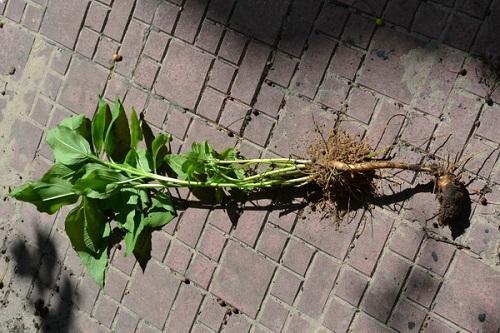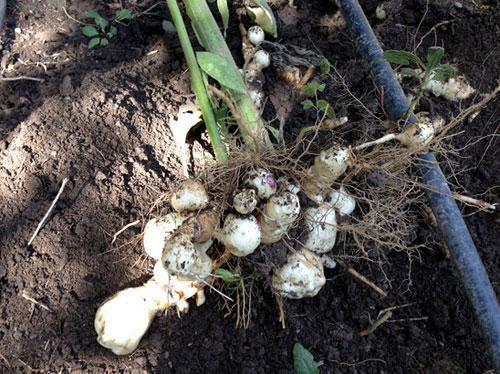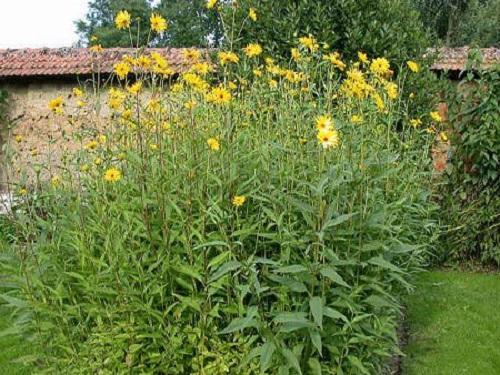How to grow Jerusalem artichoke in the country?
Often, gardeners, seeing Jerusalem artichoke thickets on their site, destroy them like a weed. Of course, the tall stems of the plant are able to drown out any neighboring plantings. However, Jerusalem artichoke or earthen pear is a very healthy vegetable that is not only eaten, but also used in folk medicine. Therefore, those who are not lucky enough to find a medicinal root crop in the garden grow it themselves.
Soil preparation

There is nothing difficult in growing Jerusalem artichoke in the country, no. The earthen pear is not demanding on the composition of the soil and is able to survive on almost any soil. But still, as before planting other crops, the site should be pre-prepared. To do this, manure or compost is introduced into the place designated for Jerusalem artichoke in the fall and dug up.
When planning a place for planting Jerusalem artichoke, it is worth considering that it can grow in one place for more than 30 years (if you do not completely dig out the tubers). But after the sixth year of the life cycle, the amount of the crop gradually decreases.
Planting tubers

There are two ways to plant Jerusalem artichoke:
- in autumn with whole tubers;
- in spring (late April) with tuber fragments.
They make not very deep grooves, up to 15 cm, with a row spacing of about 70 cm. Tubers are laid out in grooves at a distance of 40 cm from each other so that there is enough space for the formation of a new plant. Fill the groove with earth using a rake, while forming a ridge.
Care of young plantings of Jerusalem artichoke

To provide the tubers with the required amount of air, the beds must be loosened regularly and weeds must be removed. When young shoots reach a height of 50 cm, they huddle it up and continue to do this as the shoots grow.
It is advisable to tie up Jerusalem artichoke bushes above 1 m, especially if there is a threat of strong winds, otherwise they may break.
If you do not plan to collect seeds, it is recommended to remove the inflorescences during flowering so that all the power is spent on the formation of tubers. In June, Jerusalem artichoke bushes are cut to a height of 1.5 m from ground level.
Harvesting and storage of crops

With the onset of autumn, the stems of the earthen pear are cut again, leaving 20 cm stumps. The tubers will be ready for harvest 120 days after planting (about the time when the potatoes are dug out).
Due to the ability of Jerusalem artichoke to withstand severe frosts, the harvesting of root crops can be postponed to early spring. In this case, the beds are covered from above with earth and snow. Experienced gardeners who use this method say that the roots that have overwintered in the beds have a sweeter taste. Jerusalem artichoke, harvested in the fall, is stored in the basement or in the cellar.